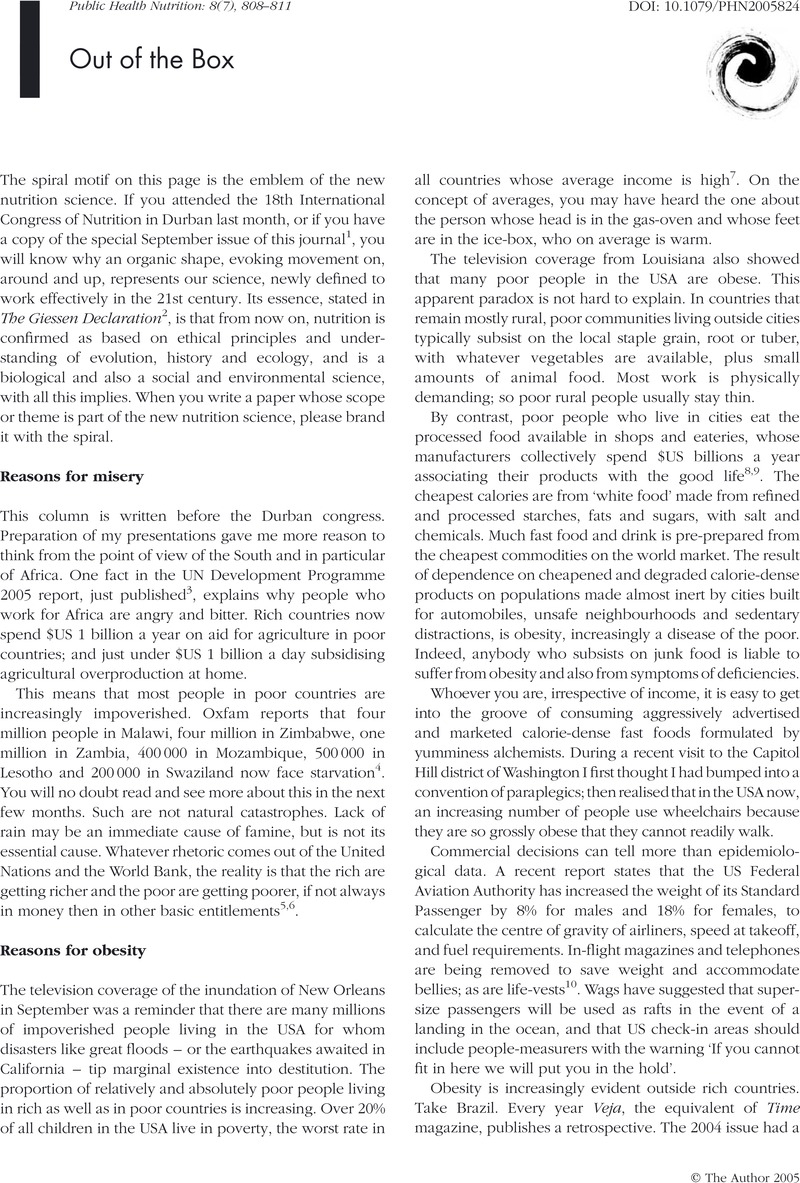Crossref Citations
This article has been cited by the following publications. This list is generated based on data provided by Crossref.
Garrow, John
2005.
A two-box option.
Public Health Nutrition,
Vol. 8,
Issue. 2,
p.
215.
Huovila, Janne
and
Saikkonen, Sampsa
2018.
Casuistic Reasoning in Expert Narratives on Healthy Eating.
Science as Culture,
Vol. 27,
Issue. 3,
p.
375.



